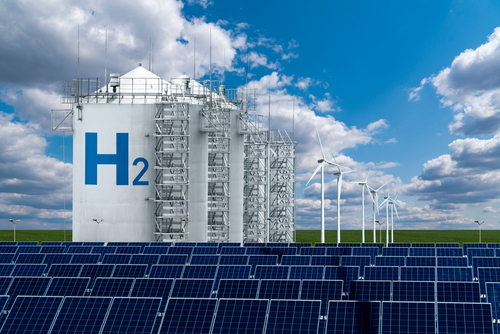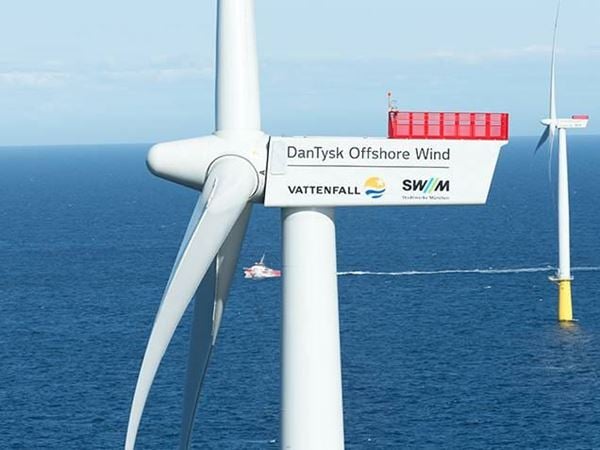The circular economy is an economic model that is based on the reduction, reuse, recycling and recovery of materials and resources, with the aim of minimizing environmental impact and maximizing economic value. This model has become a key tool to face the environmental and social challenges that the world is currently facing, such as climate change, the scarcity of natural resources and the increasing generation of waste.
The energy industry is one of the most important and critical industries for economic and social development, but it is also one of the main sources of greenhouse gas emissions and other environmental impacts. The transition to a circular economy model in the energy industry can have a major impact in reducing these emissions and creating a more sustainable future.
In this article, practical examples and success stories of how the circular economy is changing the energy industry will be presented. Renewable energy strategies and technologies, the improvement of energy efficiency and the recycling of materials that are allowing a transition towards a circular economy model will be analyzed. Likewise, the economic and environmental benefits of the circular economy in the energy industry and its importance in mitigating climate change and the transition towards a low carbon economy will be discussed.
The circular economy in the energy industry:
The energy industry is one of the most important areas in which the circular economy can be applied. This industry is responsible for a large part of greenhouse gas emissions, which are one of the main causes of climate change. In addition, energy is a fundamental resource for economic and social development, and its access is essential to improve the quality of life of people around the world.
To reduce the environmental impact of the energy industry, various strategies based on the circular economy have been developed. Here are some practical examples:
Renewable energies : One of the most effective ways to reduce the environmental impact of the energy industry is through the use of renewable energy sources, such as solar, wind and hydraulic, among others. These energy sources do not emit greenhouse gases and are inexhaustible, which makes them ideal for a circular economy model. In addition, the production of this type of energy can be carried out in a decentralized manner, which allows a greater participation of the population in the production and consumption of energy.

Energy efficiency: Another important strategy in the circular economy is the improvement of energy efficiency. This implies the use of more efficient technologies and the implementation of practices that reduce energy consumption in production processes and in the use of resources. For example, the use of LED bulbs, the optimization of lighting in buildings and the improvement of energy management are some of the practices that can significantly reduce energy consumption.
Materials Recycling: The power industry can also benefit from materials recycling, as many of the components of power systems, such as batteries, contain valuable metals and materials that can be recovered and reused. Recycling these materials not only reduces the need to extract new resources, but also reduces the amount of waste that is generated.
Success stories in the application of the circular economy in the energy industry:
The Tesla company: It is a company that is dedicated to the production of electric vehicles and energy storage systems. One of the highlights of this company is its focus on the circular economy. The company uses recycled and recyclable materials in the production of its electric vehicles and batteries, and also has battery recycling programs to recover valuable materials. In addition, the company has developed large-scale energy storage technologies, such as the Powerpack and Megapack, that can be used to store renewable energy and reduce reliance on fossil fuels.
The DanTysk Wind Farm: This farm, located on the German North Sea coast, is an example of how the circular economy can be applied in the production of renewable energy. It consists of 80 wind turbines and has a generating capacity of 288 MW. In addition to clean energy generation, the wind farm uses a waste management system that recycles and reuses materials from turbines that have reached the end of their useful life, thereby reducing the need to extract new materials and the amount of waste generated is reduced.
These systems are establishing themselves in an area where large-scale use of renewable energy is possible, since electricity does not need to be generated in the immediate vicinity of the destination. It is only necessary to transfer it to the supraregional high voltage network.

The Eschlikon biogas plant: This plant is located in Switzerland, and is dedicated to the production of energy from organic waste, thus contributing to the circular economy. The plant uses organic waste, such as food waste and manure, to generate biogas, which is used to generate electricity and heat. In addition, the biogas production process generates solid and liquid residues that are used as fertilizers in local agriculture. In this way, the biogas plant not only produces clean energy, but also closes the organic waste loop and reduces dependence on fossil fuels.
The success stories presented show that the application of the circular economy in the energy industry is possible and economically viable. In addition, these cases show that the circular economy can generate long-term economic and environmental benefits.
Conclusions:
The implementation of renewable energy technologies and sustainable strategies that reduce the environmental impact of energy production and consumption, as well as the improvement of energy efficiency and the recycling of materials, are some of the practices that are allowing a transition towards a circular economy model in the energy industry.
The circular economy is an opportunity to transform the energy industry and move towards a more sustainable and resilient model. The implementation of strategies based on the circular economy is essential to achieve a transition towards a low carbon economy and to mitigate the effects of climate change.
Bibliographic references:
European Commission. (2015). Closing the loop – An EU action plan for the Circular Economy. Retrieved from https://eur-lex.europa.eu/legal-content/EN/TXT/?uri=CELEX%3A52015DC0614
International Renewable Energy Agency (IRENA). (2018). A New World: The Geopolitics of the Energy Transformation. Retrieved from https://www.irena.org/-


